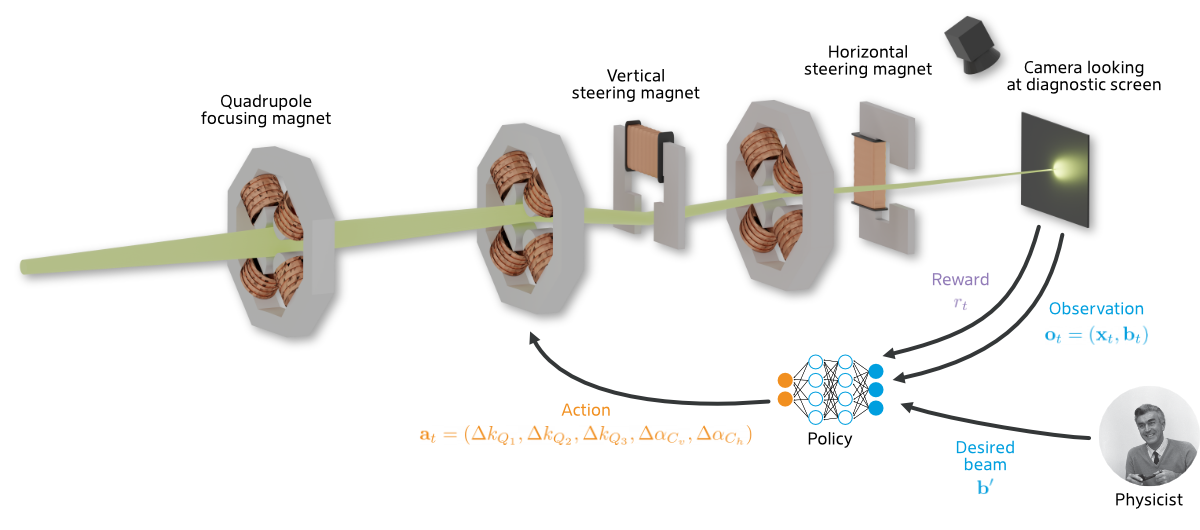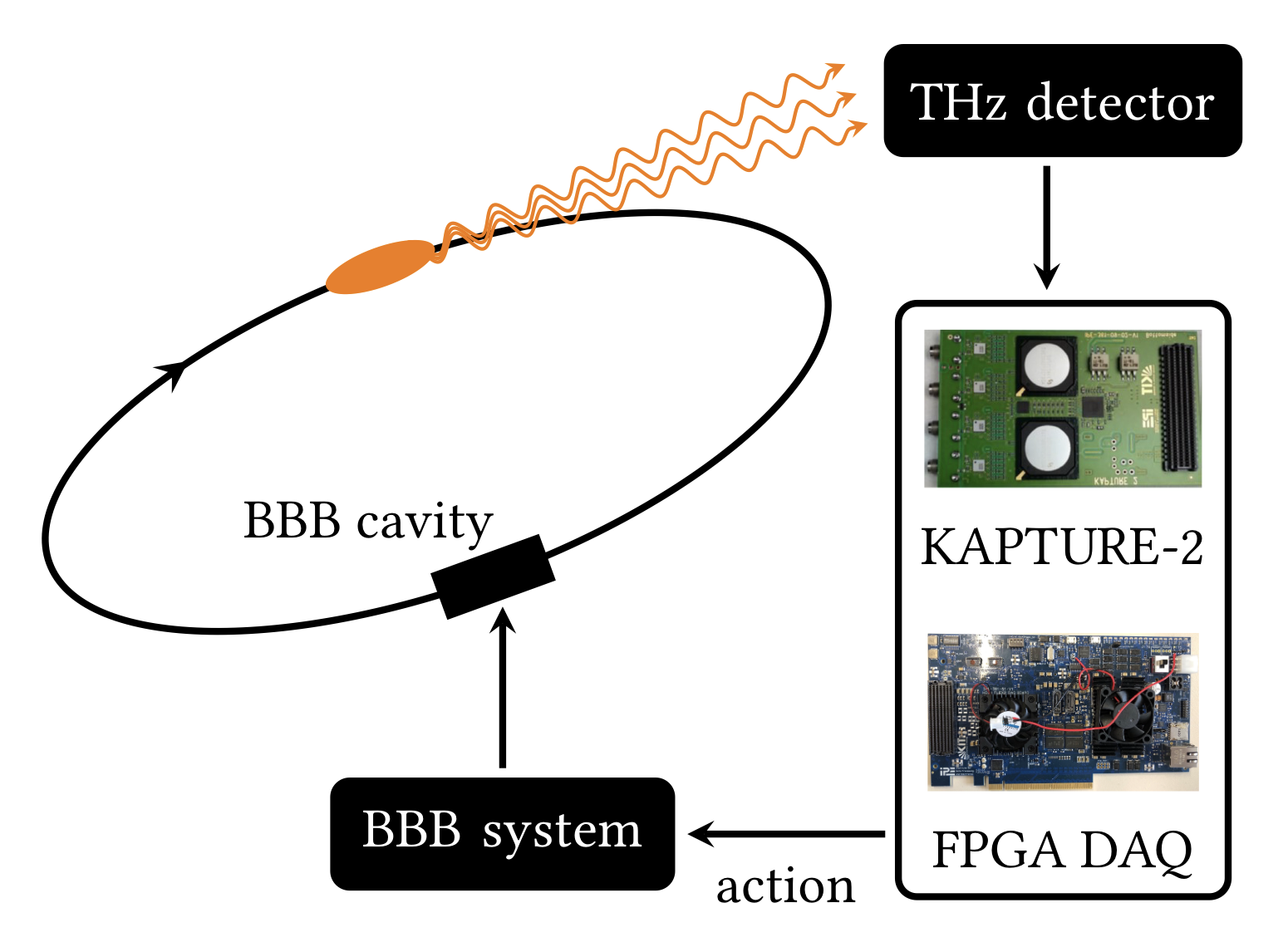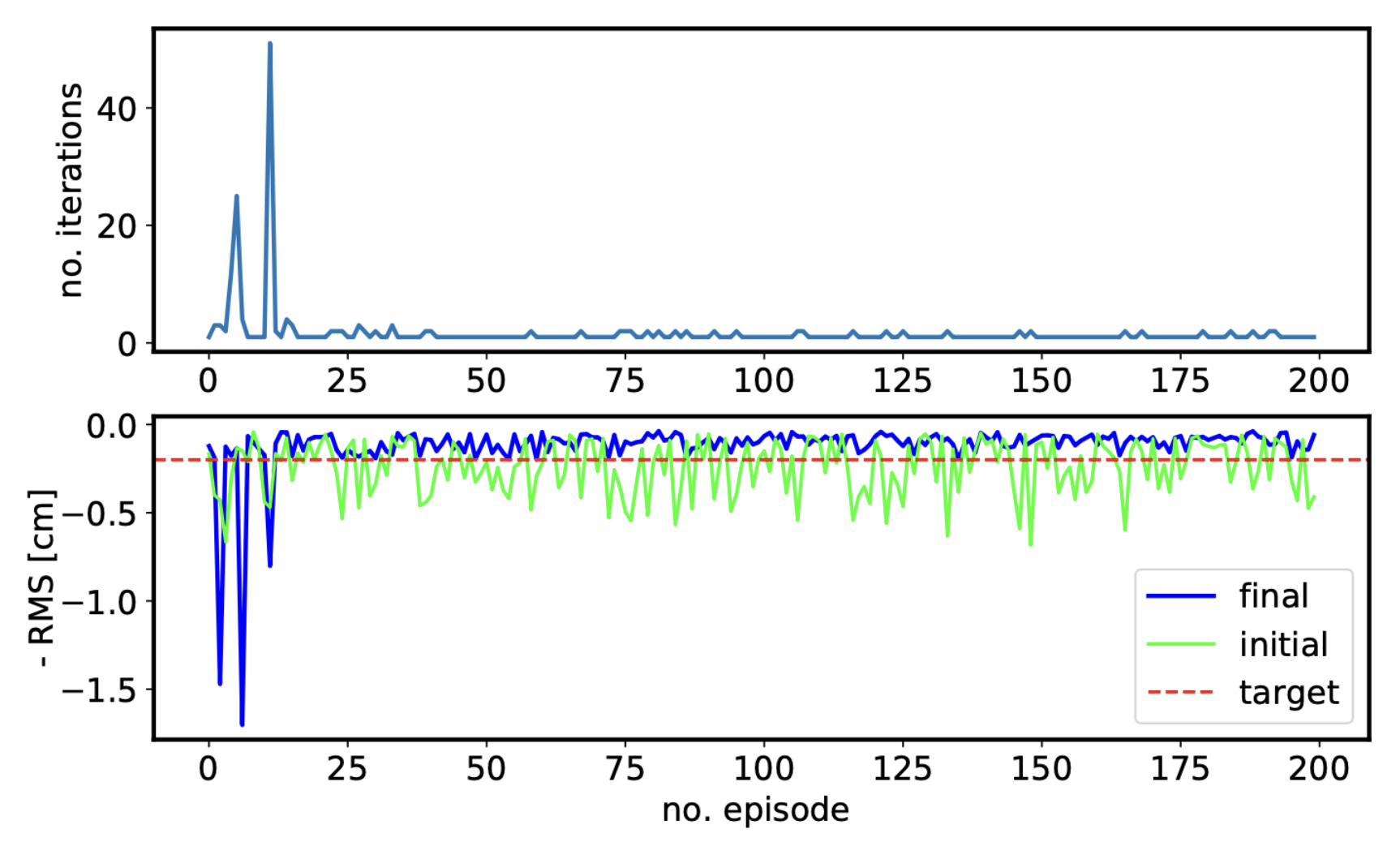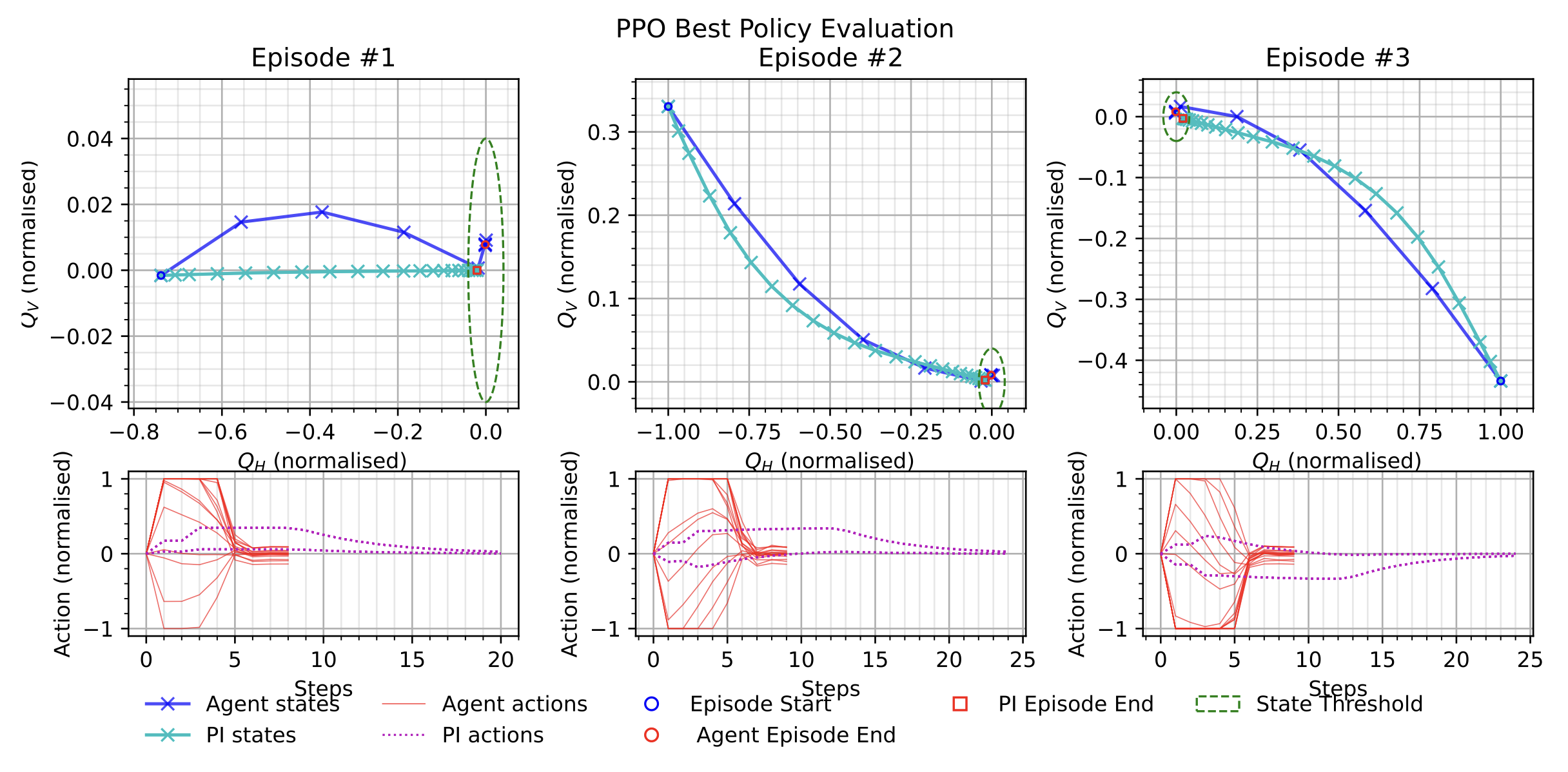
RL4AA'23: 1st Collaboration Workshop on Reinforcement Learning for Autonomous Accelerators
Reinforcement learning is the most difficult learning paradigms to understand and to efficiently use, but it holds a lot of promise in the field of accelerator physics. The applications of reinforcement learning to accelerators today are not very numerous yet, but the interest of the community is growing considerably. This is how the 1st collaboration workshop on Reinforcement Learning for Autonomous Accelerators (RL4AA'23) came to be! The AI4Accelerators team organized and hosted the workshop at KIT, gathering colleagues involved in reinforcement learning....

![Episodes from the best NAF2 agent and the PI controller with the same initial states and with a varying additive Gaussian action noise with zero mean and standard deviation as a percentage of the half action space [0, 1]. (A) 0%, (B) 10%, (C) 25%, and (D) 50% Gaussian action noise.](https://RL4aa.github.io/imgs/grech2022application.png)






